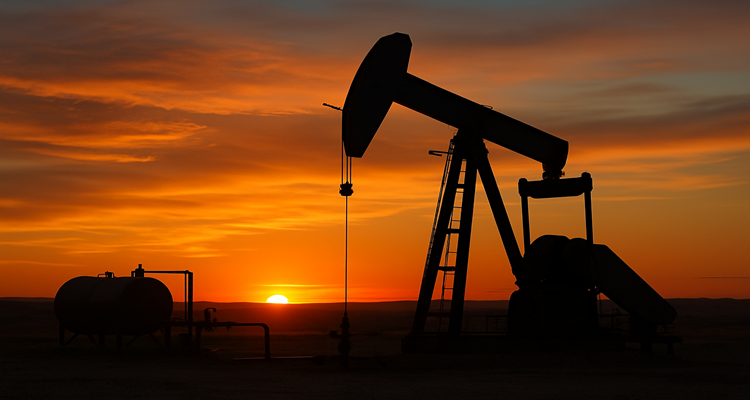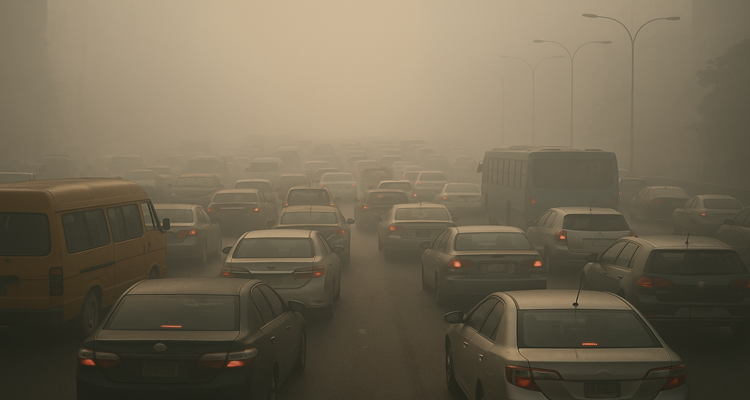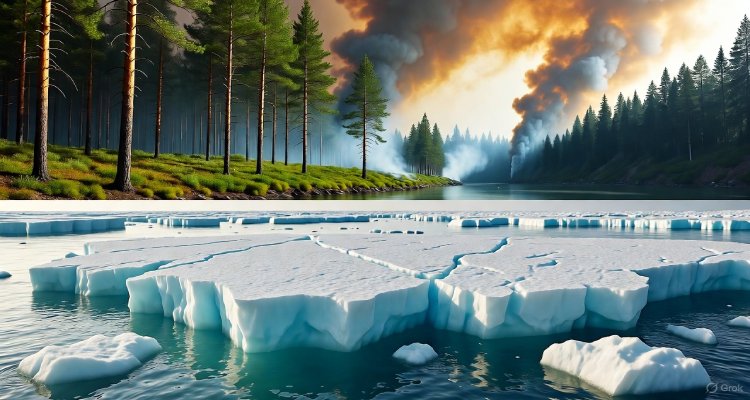Carbon Dioxide Levels Surge to Record Highs in 2024, WMO Warns of Escalating Climate Crisis
Global carbon dioxide levels hit a record high in 2024, rising by 3.5 ppm — the largest jump since records began, warns the World Meteorological Organization.
Introduction: The Air We Breathe Turns Hotter and Heavier
In 2024, the Earth’s atmosphere reached a dangerous new milestone. Carbon dioxide (CO₂) levels — the main driver of global warming — soared by a record 3.5 parts per million (ppm), marking the steepest annual rise since modern measurements began in 1957. According to the World Meteorological Organization (WMO), the surge was fueled by relentless human activity, massive wildfires, and weakened natural carbon “sinks,” signaling that the planet’s climate crisis has entered a vicious feedback loop.
The Rising Curve: A Century of Accumulation
CO₂, the most influential long-lived greenhouse gas, is primarily produced by burning fossil fuels, deforestation, and industrial processes. Historically, about half of emitted CO₂ remains in the atmosphere, while the rest is absorbed by oceans and land ecosystems. But this balance is breaking down.
WMO data shows that CO₂ growth rates have tripled since the 1960s, climbing from an average of 0.8 ppm per year to 2.4 ppm between 2011 and 2020. The leap to 3.5 ppm between 2023 and 2024 shattered previous records, underscoring a grim reality — the Earth’s natural systems are struggling to keep up.
Why 2024 Was Different: The Fire and the Heat
Several factors converged in 2024 to make it the warmest year ever recorded. A strong El Niño disrupted weather patterns worldwide, drying forests, warming oceans, and weakening carbon absorption across continents.
In the Amazon and southern Africa, unprecedented wildfires released vast amounts of CO₂, while prolonged droughts crippled vegetation’s ability to act as a carbon sink. Simultaneously, warming oceans — less capable of dissolving carbon — absorbed smaller fractions of emissions.
The result was a climate feedback loop: hotter temperatures led to more fires and weaker absorption, which in turn released more CO₂, driving temperatures even higher.
“We are witnessing the atmosphere’s capacity to self-correct being overwhelmed,” said Dr. Elena Martínez, a climate scientist with the WMO. “Every fraction of a degree now accelerates the breakdown of the planet’s natural defenses.”
Beyond Carbon Dioxide: Methane and Nitrous Oxide on the Rise
While CO₂ remains the most potent greenhouse gas, methane (CH₄) and nitrous oxide (N₂O) — the second and third most significant — also hit record highs in 2024.
Methane, responsible for roughly 16% of the warming effect, has a much shorter lifespan of about nine years but traps 80 times more heat than CO₂ in the short term. Roughly 60% of methane emissions come from human activities such as livestock farming, rice cultivation, fossil fuel extraction, and waste management, while the rest originate from natural wetlands.
Nitrous oxide, primarily released through fertilizer use, biomass burning, and industrial processes, is now growing at alarming rates. Both gases amplify the greenhouse effect, compounding the climate challenge and accelerating global warming.
The Science of Carbon Sinks — and Their Decline
A carbon sink is any system that absorbs more carbon than it emits — typically forests, soils, and oceans. These natural buffers have historically cushioned humanity’s emissions, but they are becoming less effective.
Warmer seas absorb less CO₂ due to reduced solubility, while droughts and land degradation diminish the ability of plants to sequester carbon. In some regions, carbon sinks have even started releasing more carbon than they store.
This decline means that more of the CO₂ we emit stays in the atmosphere longer, intensifying the greenhouse effect and perpetuating climate instability.
Experts Warn of Long-Term Consequences
Climate experts stress that the consequences of today’s emissions will persist for centuries. CO₂ remains in the atmosphere for hundreds of years, making the effects essentially irreversible on human timescales.
“We’re locking future generations into a hotter, more unstable planet,” warned Professor David Chen, an atmospheric chemist at Stanford University. “Even if emissions stopped tomorrow, the inertia of the system means temperatures would keep rising for decades.”
The rise in CO₂ also threatens biodiversity, food security, and ocean health, as coral bleaching, extreme weather events, and agricultural disruptions become more frequent.
The Path Forward: Action or Escalation
The WMO report reinforces the urgent need for nations to deliver on their net-zero commitments under the Paris Agreement. Experts urge immediate action to reduce dependence on fossil fuels, protect forests, and invest in carbon capture technologies.
Transitioning to renewable energy sources, restoring degraded ecosystems, and rethinking agricultural practices could slow the rise of greenhouse gases — but the window is closing fast.
Global cooperation, climate financing, and accountability will be essential to prevent further record-breaking years like 2024.
Conclusion: A Warning Written in the Sky
The record-breaking CO₂ increase of 2024 is more than a statistic — it’s a stark reminder of the accelerating climate emergency. As natural systems weaken and the planet’s atmosphere thickens with greenhouse gases, humanity faces a defining choice: to act decisively or continue down a path of irreversible change.
The air we breathe is becoming our most urgent warning signal — and the longer we ignore it, the louder it will become.
Disclaimer: This article is based on verified findings from the World Meteorological Organization (WMO) and climate science sources. It is intended for informational and educational purposes.











